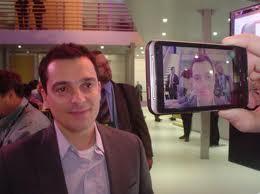BiometricsMajor breakthroughs in facial recognition, cause for concern?
Technological advances could soon make identifying an individual in a crowd as simple as taking a photo with a smartphone; researchers at Carnegie Mellon University’s Heinz College have developed PittPatt, a software tool that can take a snapshot of a person and track down their real identity in a matter of minutes

Positive ID may be as easy as taking a photo in a crowd // Source: nexus404.com
Technological advances could soon make identifying an individual in a crowd as simple as taking a photo with a smartphone.
Researchers at Carnegie Mellon University’s Heinz College have developed PittPatt, a software tool that can take a snapshot of a person and track down their real identity in a matter of minutes.
PittPatt harnesses the power of the Internet by combining facial recognition technology with the plethora of information available online. After taking an individual’s photo, the software searches online to find publically available photos on sites like Facebook, a company’s website, or a college athletic photo to identify that person.
In their most recent round of tests, researchers were able to successfully match unidentified pedestrians on a North American college campus with their online identities.
In the past, facial-recognition tools suffered from a lack of processing power. In 2001, Florida deployed Viisage facial recognition software to search for potential trouble makers or terrorists at Super Bowl XXXV in Tampa Bay. Out of the thousands of people in attendance, police were only able to find useful information for nineteen people with minor criminal records who already existed in a database they had access to.
In contrast, technological breakthroughs over the past several years have now made it possible to identify an individual’s social security number using just their photo.
“The (PittPatt) team proved that it’s possible to predict what someone’s social security number is based on their Facebook profile,” said Amy Webb, the CEO of Webbmedia Group, an international digital strategy consulting firm. “So if we know that, via Facebook, we can determine who someone is based only on their photo, and we can determine social security numbers based on Facebook profiles, it is likely (and proven) that we can determine someone’s social security number by scanning their face.”
The technology is still in development, despite recent breakthroughs, Webb said. “While the (facial recognition) technology is incredibly sophisticated, the failure rate is still high.”
Given the enormous potential for facial recognition, privacy could become a serious problem.
“If you value your privacy, yes, you should be concerned about face and iris recognition technology,” warned Webb.
“We are arguably the most monitored society in the history of civilization,” she said. “It has become easier to not just see that we’re in a place, but also who we are, where we work and who we’re connected to in real life.”
To help minimize the chance of detection, Webb urges individuals to avoid sharing personal details online.
“It’s good practice to monitor yourself and to ensure that what digital identity information exists about you is information you’re comfortable sharing with the entire world.”
Webb also suggests taking several other precautions to avoid identity exploitation like raising privacy settings to the highest possible level on Facebook, Twitter, and other social media platforms. In addition, changing image settings so that others cannot tag photos of you can help reduce the chances of identification.
These precautions will likely become increasingly important as online identities become more closely tied to our physical selves.
Alessandro Acquisti, one of the Carnegie Melon researchers working with PittPatt, stated that their research demonstrates how quickly digital identities are merging with the physical world.
Acquisti said, their research explored if “the convergence of publicly available Web 2.0 data, cheap cloud computing, data mining, and off-the-shelf face recognition is bringing us closer to a world where anyone may run face recognition on anyone else, online and offline - and then infer additional, sensitive data about the target subject, starting merely from one anonymous piece of information about her: the face.”
